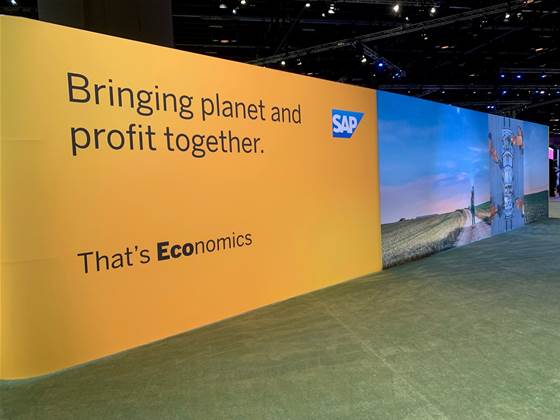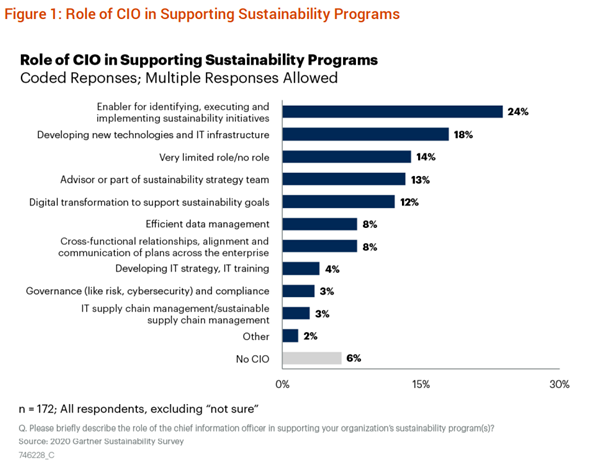Business leaders who do not embed sustainability in their core business strategy are creating a huge risk for their organisations, said the executive charged with managing SAP’s sustainability efforts.

Stakeholder groups including customers, employees and investors are all creating pressure points around the purpose of organisations, said Daniel Schmid, chief sustainability officer at the German software giant.
He told Digital Nation Australia that the rise of sustainability as a core strategic issue is one of the most significant developments he has seen over the last two to three years.
And the data from industry researchers such as Gartner appears to bear him out.
Chief executives now include environmental sustainability in their top 10 strategic business priorities, according to Gartner’s 2022 CEO survey released this month. That’s a significant change from last year when it came in 14th and more so from 2015 when it barely made the top 20.
It is also clear from the data that this reflects much more than just a compliance mindset.
For instance, of the 80 percent of CEOs who intend to invest in new or improved products this year and next, environmental sustainability was cited as the third-largest driver, just behind functional performance and general quality.
Sustainability also appears as a competitive differentiator in 2022 and 2023 – with CEOs assigning the same weight to it as they do for brand trust.
According to Schmid, “I would say there's either sustainable business or no business. I have a clear view on that one.”
However, he acknowledges that there are different maturity levels, starting with those who view the issue primarily as one of compliance.
On one level that's not surprising, with governments adopting increasingly robust legislative programs across the world. For instance, both Australia with its Modern Slavery Act and Germany with its Human Rights Due Diligence Act are addressing exploitation in supply chains.
“As well, on the environmental legislation or reporting standards, customers are confronted with the alphabet soup of various standards,” Schmid said. He noted that it is unfortunate that some companies are investing more time in meeting reporting standards than in improving performance.
More mature companies have come to understand that a strong business case can be built for sustainability, he said.
“If I can be more efficient in dealing with my resources in a better way avoiding waste, I save money. If I would reduce my energy consumption, I save costs and I can reduce my emissions. So there are some beautiful elements if you do it in a smart and connected fashion, and create a business case," Schmid explained.
The most mature businesses however have already come to understand that sustainability is a huge innovation driver that provides opportunities to reinvent business strategy, and within its products and services where sustainability is directly embedded, said Schmid.
“As an example, focusing on circularity. Efficiency alone will not solve today's challenges. We need to do business differently with the ambition to think about circularity from the beginning.”
Schmid also took a more realistic view of how much progress has been made already, “I attended a conference from the World Business Council for Sustainable Development in Montreal and their big tagline on that conference was sustainability is mainstream.
"I was astonished about that one. Of course, I love it, but I would say business leaders understand it needs to become mainstream.
"But is it already mainstream? Definitely not.”
Sustainability sits are the heart of SAP’s messaging at this year’s Sapphire 2022, its annual customer conference in Orlando.
“I have had great discussions, inspiring discussions with CIOs. They embrace the topic.”
Schmid says CIOs need to support efforts to embed sustainability criteria into core business processes to enable the decision-makers to have the financial and non-financial data they need in a timely fashion to drive their decision making on the topic.
“That makes a difference and the CIOs understand. ‘Yes, I have a responsibility because I don't know any software, working without hardware and I don't know any hardware working without energy.' ”
With the huge trend towards digitalisation, there's an additional responsibility, he said.
“There is a need to be as efficient as possible. Think about the virtualisation of servers in the data centre or the move to the cloud. They know that we offer all our solutions out of our clean cloud with 100 percent renewables already since 2014. That's important for them.”
Accelerating digitalisation and the rise of cloud computing have clearly created a need for CIOs to address issues such as energy consumption. But while CEOs are clearly more onboard than in the past with sustainability as a strategy, the situation with SAPs traditional customers – the CIOs is more nuanced.

Gartner has tracked growth in the importance of sustainability to CIOs for a number of years now.
While CIOs and the IT organisation play an important support role, Simon Mingay author of Gartner’s The Role of the CIO and Technology in the Enterprise Sustainability and ESG Endeavor report describes the role of CIOs as mostly enabling and supporting organisational efforts, although he cautions that should not imply they only play a reactive role.
What KPIs?
When we tested the sustainability responsibilities of CIOs with speakers at Sapphire, however, we encountered generalities rather than specifics when we asked them to describe their individual accountabilities to deliver sustainable outcomes.
This reflects the experience of Australian CIOs Digital Nation has spoken with, very few of whom have KPIs on things like energy consumption for instance, despite running increasingly carbon hungry data centres.
Arthur Hu, Lenovo's CIO and CTO meanwhile told Digital Nation Australia, “I see it everywhere in the work [we do].
“Sustainability is a huge problem. How do we actually contribute with a lower power profile, higher density, liquid cooling technology so that it's more efficient than the last generation data centres? And how do we actually build dashboards … and make that easy and accessible in real-time so that as a corporate goal, it actually starts to flow into all the operations. In the end, the technology team can have a huge part to play in instrumenting and enabling that.”
According to Jane Connell, SVP and CIO are Verizon, “I would say I'm looking for the sustainability in a really broad way. I wouldn't say it's just technology focus but for supply chain I mean, obviously, we're looking at on emissions in our factories, and looking at sustainable ingredients.”
Finally, Autodesk’s SVP and CIO Prakash Kota noted the role of software suppliers needed to be scrutinised as much as hardware or cloud infrastructure providers.
“We have certain standards to ensure that their philosophies on how they operate match to our sustainability goals. It's very important who we collaborate and partner with, to meet all our sustainability goals.”
But when asked by Digital Nation to identify specific sustainability-focused KPIs they were required to achieve, none of the CIOs offered concrete examples.
Still, the example of these three CIOs suggests they are at least more focused on building sustainability into the business process than their Australian counterparts, likely reflecting the lesser priorities given to the topic in the ANZ market.
In 2021, according to Gartner, half of ANZ CIOs said expected no change in their enterprise’s focus on environmental and social compared with its focus pre-COVID-19.
Nearly half of ANZ CIOs indicated they expect a small or significant increase in their organisation’s focus on sustainability, compared with 57 percent globally, again suggesting the issue is getting less focus down under than elsewhere.
Against that, the number of Australian CIOs who say they have no involvement in sustainability has fallen to less than one in 10, down from a third two years earlier.
According to Gartner, “CIOs see their role in this area increasing, with a small number (3 percent) expecting they would be leading their organisation’s sustainability efforts in two years.”



.png&h=140&w=231&c=1&s=0)





.png&w=100&c=1&s=0)

 iTnews Benchmark Security Awards 2025
iTnews Benchmark Security Awards 2025
 Digital Leadership Day Federal
Digital Leadership Day Federal
 Government Cyber Security Showcase Federal
Government Cyber Security Showcase Federal
 Government Innovation Showcase Federal
Government Innovation Showcase Federal
 Digital NSW 2025 Showcase
Digital NSW 2025 Showcase







.jpg&h=271&w=480&c=1&s=1)




_(1).jpg&h=140&w=231&c=1&s=0)



